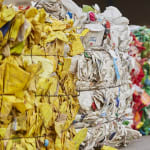
The double-digit dip in the import-export markets for the entire period January-September 2020 and the complex economic context due to the world health crisis prompt the trade association Amaplast to predict a rather negative year-end result for the Italian plastics and rubber processing machinery, equipment, and moulds industry.
ISTAT foreign trade data for the first nine months of last year, compared to the same period in 2019, show imports and exports falling by 17% and 14% respectively. The balance of trade, while still amply positive at over 1.3 billion euros, has shrunk by thirteen points.
While improving somewhat after the trough in May, these indicators - combined with the drop in orders among member companies, especially in the first half of the year and particularly in the domestic market - lead the Amaplast Statistical Studies Centre to estimate total production for 2020 at 3.6 billion euros, representing approximately -18% with respect to the 4.4 billion in 2019. An analogous result is expected in the consolidated year-end results for foreign trade.

Naturally, these numbers are not surprising given the global economic impact of the pandemic, which does not appear likely to cease in the short term. The new wave of Covid-19 infections in the autumn and winter has incited machinery manufacturers to develop and implement new operating modalities: many Italian companies have successfully introduced complex remote installation and maintenance procedures, ensuring their customers production continuity, particularly in sectors - such as packaging and medical - that have suffered less from the crisis.

Moreover, the cost savings deriving from reduced in-person technical service may be an important innovation for the future. These new work modalities are possible thanks also to the ongoing research and development by the Italian manufacturers in an Industry 4.0 perspective, which makes it possible to offer interconnected machinery for increasingly sophisticated, custom-fitted production systems.
Additionally, increasing computerization makes it possible to collect an enormous quantity of data that will contribute significantly to optimizing production line performance. While the pandemic has temporarily distracted public opinion and softened negative criticism of plastics, technology suppliers have continued their research into energy-saving solutions for efficient processing of recycled materials within a vision of circular economy. At the same time, the enactment of the so-called “plastic tax”, which has been so worrisome for businesses in the sector, has not been abrogated but only postponed to 1 July 2021.
It is difficult to make forecasts for the new year, mainly because of the uncertainty that continues to surround the pandemic, which conditions markets and companies’ investment planning. A rebound is likely, once again thanks to the impulse from exports, which have always been the mainstay of the Italian plastics and rubber industry, but it is not likely that it will be of such magnitude that we will soon see figures similar to those in the pre-crisis period.


